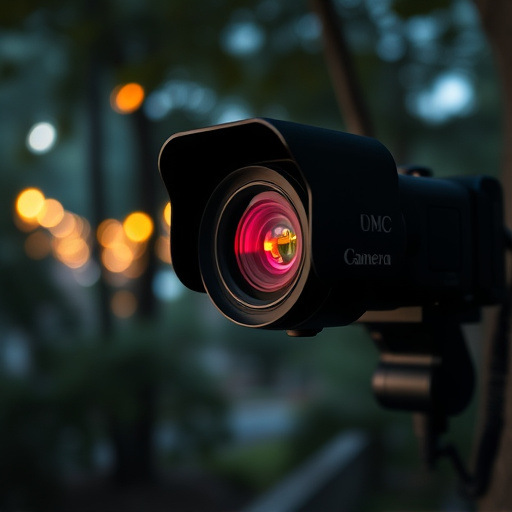Nanny cameras, integrated with mobile phones via apps, offer parents remote monitoring and instant communication through live video feeds and two-way audio. Strategically integrating these devices into lighting systems hides them from view while maintaining domestic privacy. Testing involves light-based detection techniques and computer vision algorithms to identify hidden cameras without damage. Protecting privacy requires robust security systems, encryption, regular audits, and public education on legal implications to counter sophisticated camera identification methods.
In an era where privacy concerns are paramount, understanding hidden camera identification is crucial. This article explores a modern menace: disguised cameras, often used in homes as “nanny cams,” and their integration with mobile phones through alerts. We delve into the subtle art of lights in concealing these devices and present testing methods to detect them. Furthermore, we offer strategies to enhance privacy, providing valuable countermeasures against surveillance without consent. Stay informed about protecting your personal space in the digital age.
- Understanding Nanny Cameras and Mobile Phone Integration
- The Role of Lights in Disguising Camera Presence
- Testing Methods for Identifying Hidden Cameras
- Enhancing Privacy: Effective Strategies and Countermeasures
Understanding Nanny Cameras and Mobile Phone Integration
Nanny cameras, also known as hidden cameras or surveillance devices, are small, discreet cameras designed to monitor activities in a specific area, often used for home security or childcare purposes. These cameras can be easily integrated with mobile phones through apps, enabling users to receive live video feeds and alerts on their smartphones. This real-time connectivity is a game-changer for parents who want to keep an eye on their children’s activities while they’re away from home.
Mobile phone integration takes the convenience of nanny cameras to the next level. With just a few taps on their screen, parents can check in on their kids, see what’s happening in real time, and even talk through two-way audio features. Nanny Cam With Mobile Phone Alerts becomes an indispensable tool for modern families, offering peace of mind and the ability to respond quickly to any situation.
The Role of Lights in Disguising Camera Presence
In the quest to maintain privacy, especially in domestic settings, the strategic use of lights plays a pivotal role in disguising camera presence. A Nanny Cam With Mobile Phone Alerts, for instance, can be effectively hidden by leveraging ambient lighting or strategically placed artificial lights. Bright, diffused light sources help blend the camera into its surroundings, making it harder to distinguish from ordinary fixtures. This is particularly useful in high-traffic areas like kitchens or living rooms where constant movement might otherwise draw attention to an unseen eye.
By integrating these cameras into existing lighting systems, users can create a seamless and secure environment. The subtle glow of a table lamp or the soft radiance of ambient LED strips not only provide illumination but also serve as a decoy, drawing focus away from the actual camera. This dual function ensures that even if someone spots an unusual light, they’re unlikely to realize it’s a Nanny Cam With Mobile Phone Alerts, keeping potential intruders or peepers at bay.
Testing Methods for Identifying Hidden Cameras
Testing hidden cameras, especially those disguised as everyday items like a nanny cam, requires innovative methods to ensure their identification. One effective approach involves utilizing light-based detection techniques. By analyzing patterns and changes in lighting, experts can uncover suspicious devices. This method is particularly useful for mobile phone alerts, where real-time data from the camera’s operation can be analyzed to flag anomalies.
Advanced algorithms and computer vision techniques play a pivotal role here. They are designed to detect subtle variations in light intensity or color shifts that might indicate the presence of an hidden camera. For instance, a Nanny Cam With Mobile Phone Alerts could be identified if it operates differently under varying lighting conditions compared to regular household items. This non-invasive testing method not only helps uncover concealed cameras but also ensures privacy by minimizing damage or disruption to the environment.
Enhancing Privacy: Effective Strategies and Countermeasures
In today’s digital age, enhancing privacy has become a paramount concern, especially with the proliferation of hidden cameras like nanny cams that can be controlled via mobile phone alerts. To mitigate this growing issue, individuals and organizations must adopt robust strategies to protect their personal spaces. One effective countermeasure is implementing advanced security systems that employ encryption and secure network protocols, making it difficult for unauthorized devices to access or record footage.
Additionally, educating the public about the legal implications of installing hidden cameras without consent is crucial. Many regions have strict regulations governing surveillance technologies, and raising awareness can deter potential offenders. Moreover, regular system audits and updates ensure that security measures keep pace with evolving technology, fortifying privacy defenses against sophisticated disguised camera identification techniques.
Disguised camera identification has become a vital concern in an era where privacy is increasingly fragmented. The integration of nanny cameras with mobile phone alerts offers a sophisticated solution, but it’s only effective if we understand the role of lights in masking their presence. Through rigorous testing methods and the implementation of strategic countermeasures, homeowners can enhance their privacy. By staying informed about these advancements and adopting proactive measures, individuals can ensure their peace of mind in an increasingly connected world.
